The beauty of compost is that it’s reasonably inexpensive, takes little effort to create, and doesn’t require too much space to have a small to medium scale setup in the corner of your yard.
Mushroom compost is very easy to create and contains an even richer nutrient content (particularly nitrogen). This compost is an exceptional gardening additive that warrants its recent popularity.
But, will mushroom compost burn plants? Do you also have this same doubt?
Truly speaking, there is a slight risk that mushroom compost can cause leaf burn if certain precautions aren’t taken. So we must follow certain do’s and don’ts and everything in between when using this compost to ensure that your plants are safe from burning.
However, there are many benefits of shroom plant food include increased water-holding capacity within the soil and nutrient amendment, which can be used with a wide range of plants.
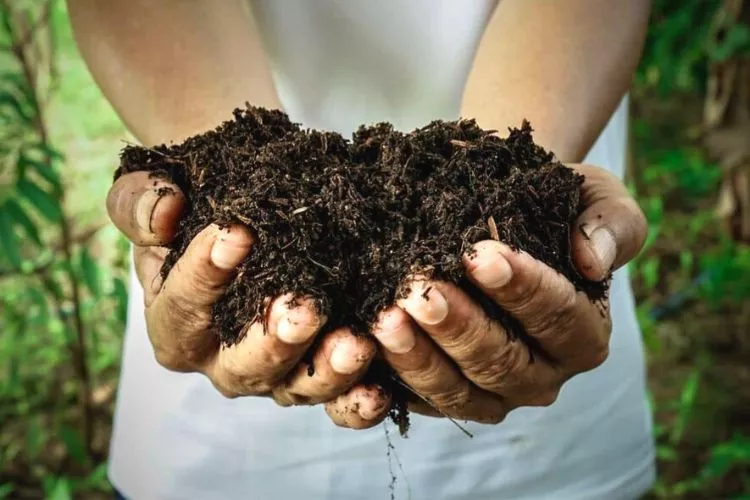
Table of Contents
What is mushroom compost?
Mushroom compost is an organically created, high-salt fertilizer that slowly releases nutrients. There are many different methods of producing this wonderful plant food.
A store-bought blend usually contains an average of around 2.29% calcium, 1.24% potash (potassium), 1.07% iron, 0.67% phosphate (phosphorus) and 0.35% magnesium, to name a few most important minerals.
A store-bought mushroom compost mix’s average pH is 6.6 (6.0 – 7.0 is an ideal median range for most plant species). It usually contains traces of lime which help raise the pH if the soil is a little on the lower side of the pH scale.
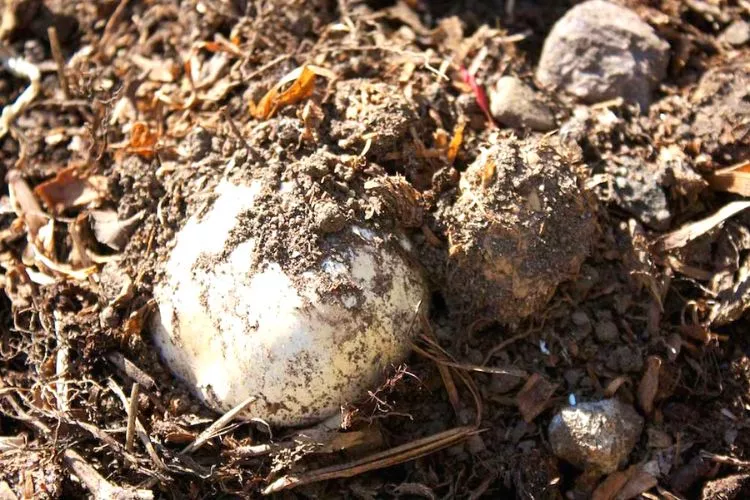
Mushroom compost is made by a method known as hot composting. Hot composting is achieved by blending various organic materials such as hay, corncobs, grass clippings, leaves, horse or poultry manure, stable horse bedding, food scraps, straw, weeds, gypsum, etc.
Once the organic materials are added, mushroom bacteria or spores are also applied to complete the blend.
They are initially mixed up in a large pile or composting area. Once everything is thoroughly churned, water is added, and heat is produced from the gasses at the bottom of the pile. The pile is usually aerated on regular occasions and kept damp.
This process kills weed seeds so they don’t interfere with the new growth. The technique takes anywhere between 30 and 60 days, depending on the pile size.
Once complete, the blend can be mixed into the required plant soil, where all major benefits can be achieved.
Will mushroom compost burn plants?
Mushroom compost has a high-salt content, meaning excessive use can cause the burning of different parts of the plant. The increased salt in the compost restricts the plants’ tissues ability to absorb moisture. When this occurs, you may notice the leaves of your plants turning yellow and brown.
If the condition isn’t corrected, the plant will slowly die using dehydration. Furthermore, the excessive amounts of soluble salts restrict any water from being utilized by the root system, which will also slowly kill the plant.
The best way to use mushroom compost is by administering smaller amounts and testing the plant to see if it suffers.
If so, replant and start again with an even smaller amount. Some plants cannot tolerate this type of compost, but we will get to them further in this article.
How mushroom compost affects plants?
Even though mushroom compost is known for its unbelievable benefits, some drawbacks should also be addressed.
Let’s look at all the pros and cons of getting an informed picture of how best to use this naturally formed fertilizer.
Positive effects
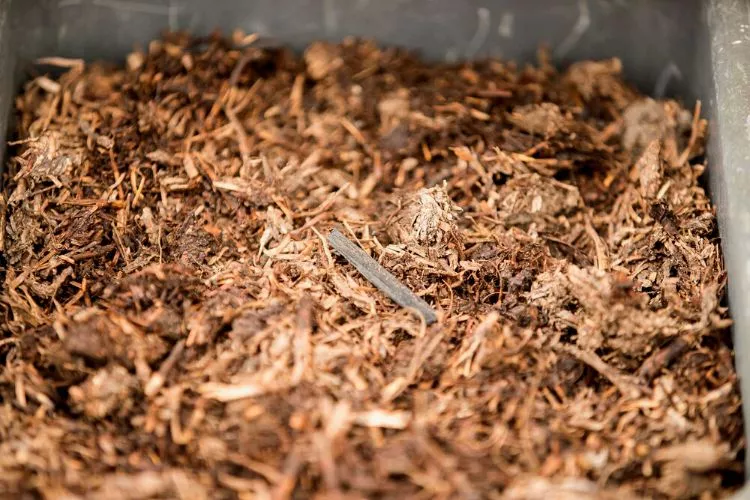
Nutritional benefits
Mushroom compost is extremely beneficial to many plants by adding essential nutrients and microorganisms. It can be added to potted plants, vegetable garden beds, perennials, trees and shrubs.
A store-bought blend usually contains 1-2% nitrogen, 0.2% phosphorus and 1.3% potassium. These 3 nutrients alone are essential for all phases of plant growth. There is a heap of other valuable minerals, including gypsum, urea, ammonium nitrate and lime.
Soil improvement
Mushroom compost is extremely handy for improving the quality of the soil to which it is added. It improves the overall structure and amends clay-like soils over time and can also increase microbial activity, water capacity, and soil temperature.
Furthermore, the lime added in the manufacturing process can also help to improve the soil’s alkalinity by increasing its pH levels.
Pest control
As the mushroom compost is created, the process kills off harmful bacteria, potential pest eggs, and weed seeds. Adding it to your plants will assist by knowing that the blend doesn’t contain anything that can cause problems in the early stages of the plants’ growth.
The plants start with a clean slate and don’t need to compete with any unnecessary hurdles as they try to establish themselves. However, it’s always good practice to carefully discard any diseased plant matter. Never add it to a compost heap, regardless of its ability to break down bacteria.
There is always the risk of disease sitting dormant on the outer edges of the pile, which can cause major headaches for not just one but any plant it comes in contact with.
Negative effects
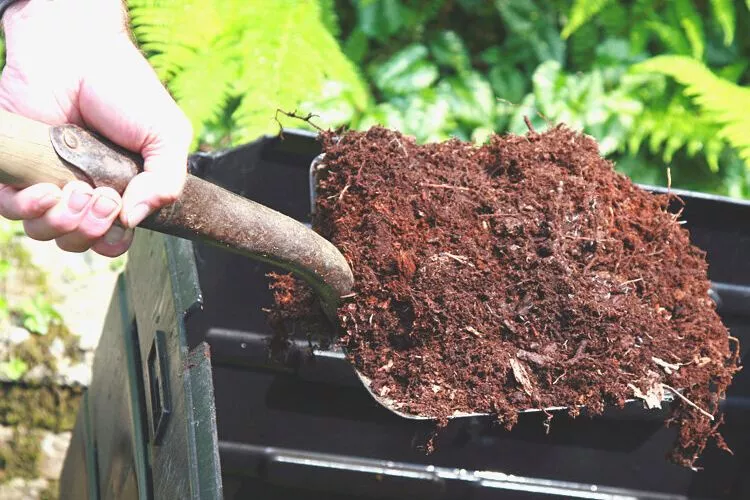
Burn risk
One of the most troublesome issues when using mushroom compost is the risk of the plant burning. The higher salt content in the compost dries up all of the plants’ available moisture faster than usual, leaving them dehydrated and at risk of dying.
Initially, the leaves will turn yellow, then brown, slowly dry out, and die if left unattended. Thankfully, this can be mitigated by consciously keeping the moisture levels up without overwatering. However, the risk is still there, and the signs should be observed.
pH imbalance
Most store bought blends contain small amounts of lime, which help to improve the soil’s alkalinity by increasing its pH levels. This would usually be seen as a benefit, but they can climb too high if the pH levels aren’t regularly monitored.
As a result, the plants’ nutrients become less soluble and less available for being absorbed by the roots. The lack of nutrients will restrict the plants’ ability to establish themselves, develop properly and grow. Therefore, this compost must be administered in smaller blends to see how the plant takes to it before going all in.
Disease transmission
Even though mushroom compost starts as a clean, organic material, there is still the risk of airborne and spore diseases entrenching themselves as the mix is utilized. The biggest problem with any compost is the management of already disease riddled plant matter being discarded incorrectly.
It’s quite common to accidentally throw away plant matter exposed to disease into compost piles without thinking. This mistake can be disastrous for the whole pile, especially anything decomposing on the outer sides.
If any diseases are left to populate within the compost heaps, they can be easily transported to the new plants, exposing them to the disease.
4 Key Factors that contribute to burn risk
One of the biggest problems that growers have when they utilize a mushroom compost blend is the risk of the plant burning. This is due to the high salt content that is produced during the mixing or manufacturing process. 4 key factors contribute to the risk of plant burn, which are as follows:
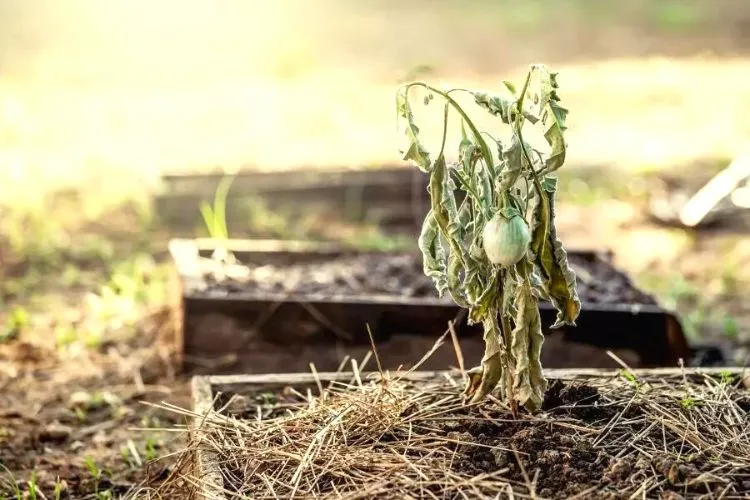
Freshness of compost
The fresher the compost, the higher risk there is of burning. Especially if you are taking it directly from a pile and using it immediately, most store-bought sacks are generally allowed to ‘air out’ enough for the salt to lose little of its potency.
Application rate
Applying too much at a high frequency can cause burning much faster than applying it steadily. It’s always best to test a product like this type of compost in smaller amounts before going all in on it. Some plants simply can’t handle the higher salt content and may require more moisture to counteract the issue.
Therefore, applying it in smaller amounts, to begin with, will help to ascertain the threshold of that specific plant. Once you know how much it can handle, slowly increase the application amount and rate.
Type of plant
Every plant has different tolerances to salt and, therefore, the subsequent risk of burning. The salt restricts moisture intake, which plants need for growth. As a result, some plant types can burn faster than others. At the same time, some species of plants won’t tolerate this type of compost whatsoever.
Some plants that don’t tolerate mushroom compost due to the higher risk of burning include blueberries, cranberries, gooseberries, juniper, peppers, radishes, raspberries, rhubarb. The structure and tissues of these specific plants are much more sensitive to salt than others, making them much more susceptible to burning.
Environmental conditions
Certain environmental conditions will increase the risk of plant or leaf burn by amplifying the effect that the salt already has. Dry, windy and warm conditions will dry the soil out even before applying compost. Then when it is applied, the salt will dry the soil out even more, which ensures that any burning happens sooner than expected.
The best way to mitigate this issue is by relocating the plant (if possible) to somewhere less exposed to the conditions. Another way to help reduce the burning is to routinely monitor the plant’s moisture levels and water accordingly.
How to prevent burn from mushroom compost?
We’ve covered all the possible factors that may contribute to burning from mushroom compost. Now it’s time to look at the range of techniques and methods you can apply to prevent the burning from occurring in the first place.
Proper composting techniques
Preparing a compost heap or bin isn’t a difficult task. The main thing to keep in mind is accessibility later down the track. There’s no telling how large a composting area can get unless it’s confined to a bin.
The best method to create compost is by choosing a patch of land that allows you to walk around the perimeter and reach the center with relative ease. Then slowly add all of your ingredients in layers.
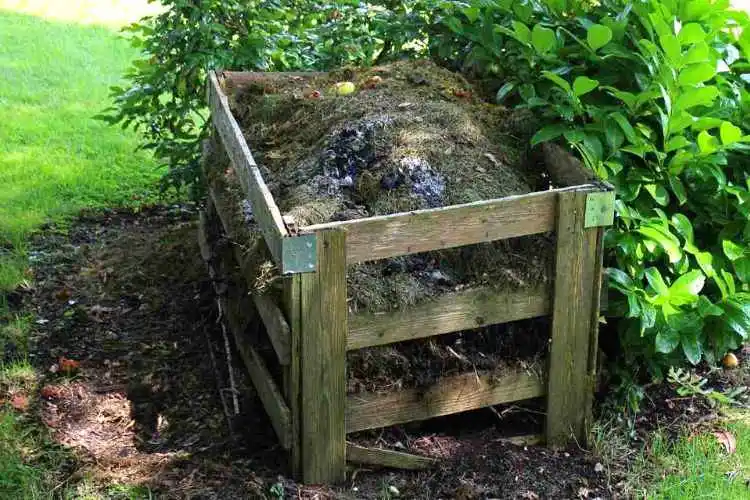
There are 4 key ingredients to a good quality compost mix which are:
- Brown materials (Carbon-rich): These can include dry leaves, dry grass, wood chips, sawdust, dry plant stalks, shredded paper and twigs. These carbon-rich materials are the food source for the abundance of microorganisms to consume, digest and excrete the good stuff.
- Green materials (Nitrogen-rich): These can include newly cut grass clippings, plant cuttings, food scraps, etc. (Try to avoid things such as citrus peels, avocado seeds, etc., as they are a lot tougher and take a lot longer to break down).
- Water (moisture).
- Air (oxygen).
Then, of course, the magic 5th ingredient is the mushroom bacteria or spores, which you can purchase or cultivate. Add in lime and some horse or poultry manure for good measure, and bam! You have yourself a top quality mushroom compost mix.
Once the materials are added to the heap, they should be churned to assist with aeration and then covered to retain heat, moisture and nutrients. You can then continue to add to the pile, turn it over as you go, and then let it sit for 30-60 days before using it on your plants.
Proper application methods
Whenever you use any kind of compost, it’s always recommended that you work a good 1–2 inches of it into the top 3–5 inches of soil. You want to make sure that it is mixed in well so that the consistency of the finished soil/compost blend is even and not clumpy.
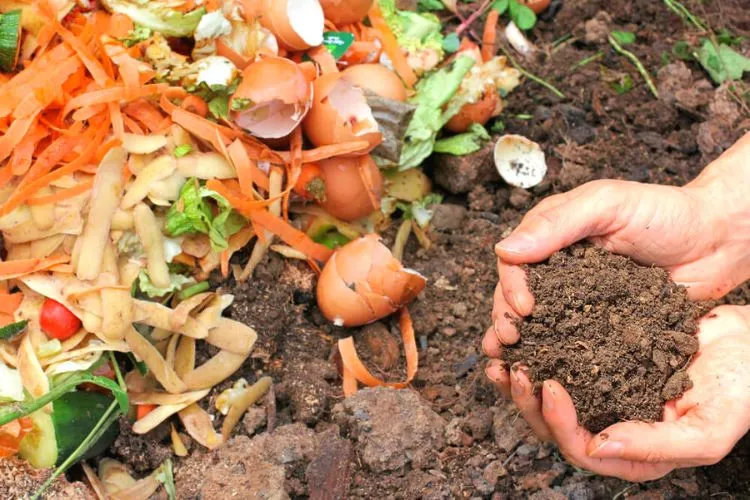
Always test the mix before spreading it all over the place. Use smaller amounts and see how the plant(s) react to it before adding more for the long term. Remember to keep checking the moisture content to minimize any burning caused by the salts.
Monitoring pH levels
The pH levels should be checked regularly by using a simple litmus tester kit. It’s recommended that you test before adding the compost, then during and after, to ensure that it doesn’t send the soil too far up the alkaline path.
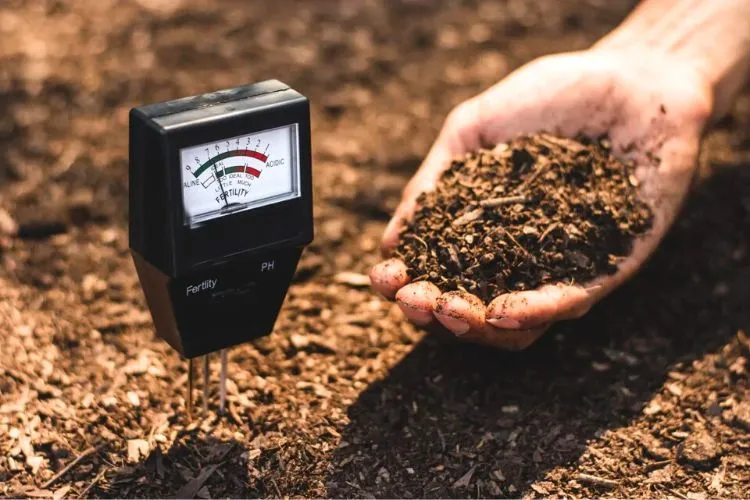
Keep in mind that every plant grows and thrives best in soil with a specific pH level. This means that you will need to test and adjust each plant individually.
Using protective mulch
Mulch is a great way to retain moisture, moderate soil temperature, and inhibit weed growth. A good quality mulch is known to reduce evaporation from soil by up to 70%. It is a welcome addition where the possibility of dry conditions could amplify the salt content within the compost.
How to Reduce The Salt Levels In Mushroom Compost?
Mushroom compost is an extremely beneficial organic material. However, the salt content can be a problem for some plant species. It can also cause issues for plants growing in conditions considered dry and/or warm.
These conditions amplify the salts’ effects and can turn a really good batch of compost into a real pain in the behind to remove and replant.
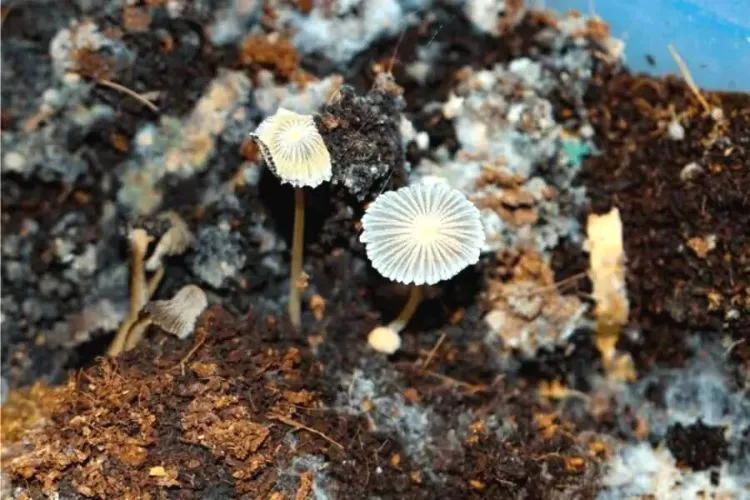
However, there is an additional process that you can implement whilst producing the mushroom compost that can help to lower the levels and intensity of the salts. The process is called Vermicomposting.
Vermicomposting works by simply adding worms to the compost. The worms consume food scraps and other organic material and turn it into a valuable soil amendment called vermicompost (a.k.a. worm compost/castings). This process decreases the exchangeable Na (Sodium) of salt-affected soils.
In simple terms, the worms eat the stuff and excrete compost with less salt. This new and improved version of the compost is even better quality and has less salt than the original mushroom compost.
Plants That Don’t Like Mushroom Compost
Mushroom compost is extremely beneficial for a wide range of plants. The problem is, though, this type of compost generally contains a higher salt level. The salt soaks up the moisture within the soil, leaving very little for the plant to grow and thrive in.
Not all plants can tolerate the salt content. Furthermore, certain stages of plant growth can also become damaged when compost is used on them. Mushroom compost should not be used in the earlier stages of a plant’s growth cycle. They are most sensitive to salt during germination and when planting seedlings.
Aside from these earlier stages, quite a few plants with sensitive roots, stems, and leaves don’t fare too well when grown with the added mushroom compost. These plants include:
- Azaleas
- Blueberries
- Camellias
- Cranberries
- Gooseberries
- Heathers
- Juniper
- Peppers
- Radishes
- Raspberries
- Rhododendrons
- Rhubarb
The majority of these plant species require acidic growing conditions. Most store bought mushroom compost products contain enough lime to raise the pH towards more alkaline levels. Therefore, using it on the previously mentioned plant species is not a good idea.
When plants that need acidic soil conditions have a considerably high pH level, they won’t be able to take in nutrients at a desirable rate. This will leave the undernourished, which restricts their ability to develop and essentially stunts their growth.
What are the alternatives to mushroom compost?
In cases where mushroom compost is unavailable or even out of your price range, other alternatives can have a lesser to similar effect. Let’s have a look at them and how they compare.
Coffee grounds
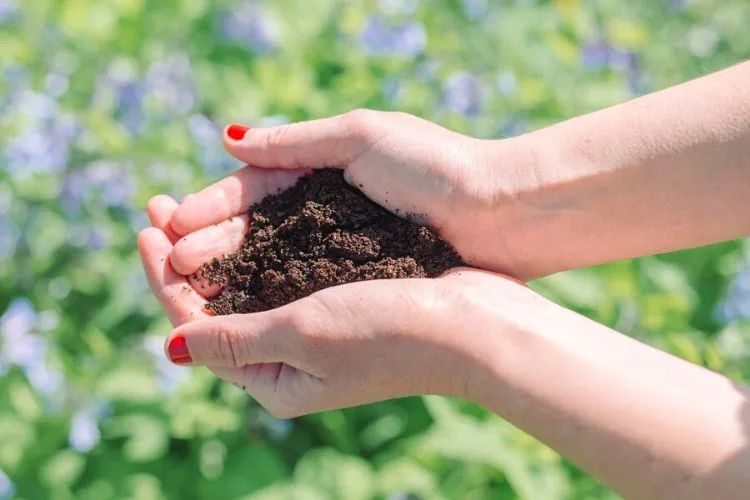
Coffee grounds are a great alternative for many reasons. It’s inexpensive (even free, depending on how you look), helps absorb soil contaminants such as heavy metals and even attracts beneficial worms.
You can simply collect them as you use them and store them in a container until you have enough to use.
Coffee grounds also contain key minerals such as calcium, chromium, iron, magnesium, nitrogen, phosphorus and potassium. However, coffee grounds should be added into a compost first and allowed to ‘steep’ for some time before use to avoid toxifying the soil unnecessarily.
Coconut coir with vermiculite
These materials are great for assisting with absorption and releasing moisture slowly.
They are also beneficial in creating air pockets within the soil, which help oxygen flow through and get right down into the roots. Oxygen is a prime ingredient for overall plant growth and development.
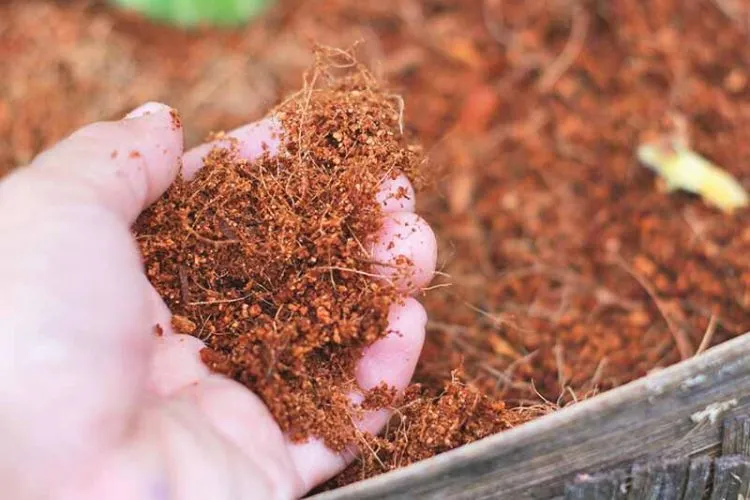
Cottonseed hulls
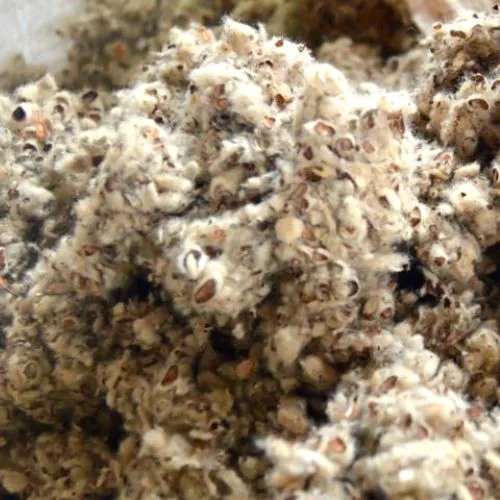
Cottonseed hulls are the outer casings of cotton seeds. They can be used as a mulch alternative which acts as a blanket and retains water.
Once broken down, the hulls release beneficial nutrients such as nitrogen, phosphorus, and potassium into the soil.
Hardwood dust
Hardwood dust or sawdust works quite similarly to cottonseed hulls and mulch by blanketing the topsoil and retaining water whilst allowing drainage and airflow to work unhindered.
Furthermore, wood dust helps to keep unwanted weeds from popping up and keeps larger areas of garden beds clean with adequate coverage.
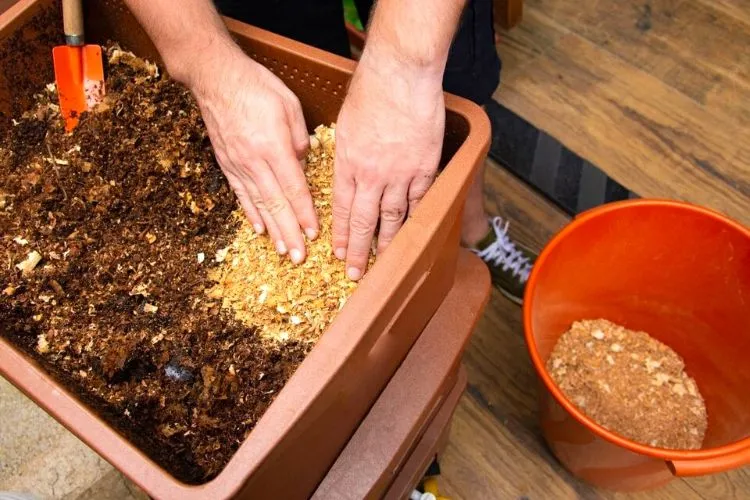
Soybean
Soybeans aren’t a common alternative to mushroom compost. However, their ability is quite impressive. Soybeans, as well as some other types of legumes, can absorb nitrogen from the air and make it available for plants. It also amends the soil’s nitrogen, allowing the next crop cycle to benefit from the added nutrients.
Frequently Asked Questions (FAQs)
Can You plant directly into Mushroom Compost?
No, mushroom compost has a high salt content. It should be mixed into the soil at 1 part mushroom compost ratio to 2 parts soil. This will help the salts and other nutrients to spread evenly throughout the newly amended compost blend.
Is mushroom compost better than regular compost?
The nitrogen content in mushroom compost is significantly higher than in traditional leaf-based compost. Furthermore, mushroom compost is much better at retaining water essential for plant development and growth. Therefore, the mushroom variant is considerably better and warrants a slightly higher price tag.
Can you mix mushroom compost with potting soil?
It all depends on the intended use. Mushroom compost has a higher salt content, which can harm germinating seeds and seedlings. However, many plants in their later growth stages can benefit from the soil amendments that mushroom compost creates. Therefore adding them to potting soil can help in most cases.
Conclusion:
Mushroom compost has a range of benefits, including adding valuable nutrients, soil improvements and subtle pest control. However, it also comes with minor drawbacks, such as the risk of burning and causing imbalances in the soil’s pH levels.
This type of compost will burn germinating seeds and young seedlings, and mature plants that thrive better in acidic soil conditions. In contrast, the added lime is great for increasing the pH levels of alkaline loving plants.
As long as you know to read the plant’s signs, you can make any corrections along the way. We hope that this guide has been helpful. You can read about similar topics here on our website. Check back again soon for more.


